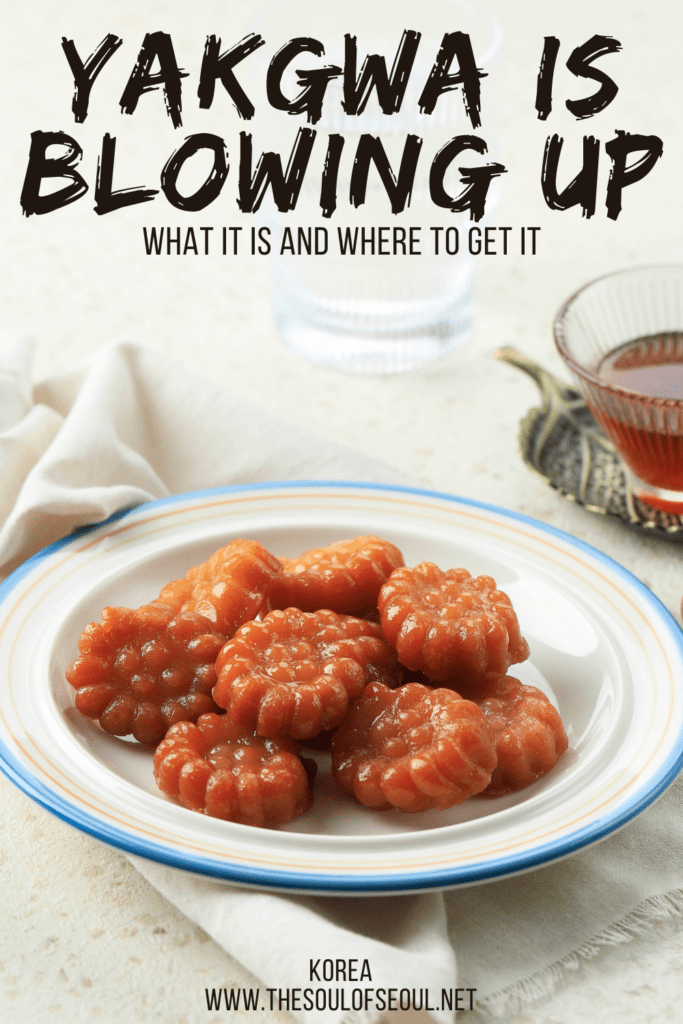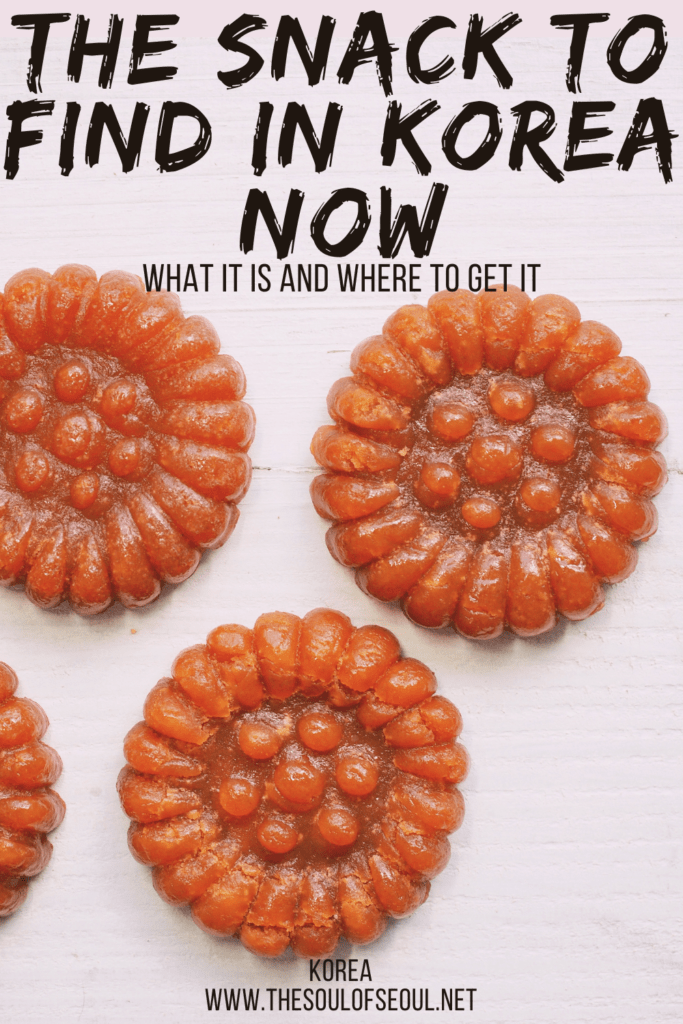How Yakgwa Is Making A Comeback in Korea
Last Updated on December 19, 2024
If you’ve been keeping an eye on the ever-evolving landscape of Korean trends, you might have noticed a sweet(ish) sensation making a comeback: yakgwa (약과). This traditional Korean dessert that you can often find in Korean tea houses and other traditional locales has been enjoying a resurgence in popularity among South Korea’s younger generations, specifically the “halmaennials,” a nostalgic generation that blends the essence of millennials and Gen Z with the tastes of their grandmothers.
If you’ve been living in Korea for any amount of time, you’ve probably seen yakgwa from time to time, but now it’s having a major moment and you can find them more and more and even in convenience stores! Get ready to learn more about yakgwa and why we’re seeing their popularity boom.

Everything you need to know about yakgwa:
- What is yakgwa (약과)?
- The history of yakgwa
- What does yakgwa taste like?
- Why is yakgwa so popular these days?
- Kinds of yakgwa
- Where to buy yakgwa online
- Where to buy yakgwa in Seoul
(This post contains affiliate links, which means I receive a certain percentage of a sale if you purchase after clicking at no cost to you. Thank you for your support.)

What is yakgwa (약과)?
Yakgwa is a traditional Korean dessert that is made with honey, cheongju, sesame oil, and ginger juice. Technically, the word yakgwa is made up of two parts yak (약), meaning medicine, and gwa (과) meaning confection, so it is a “medicine confection”.
Traditionally, yakgwa featured precious ingredients, including honey, which was treasured not only for its flavor but also for its health benefits. Today, the meaning and essence of yakgwa remain largely the same, but the recipe and the way it’s enjoyed have evolved slightly.

The history of yakgwa
Originally made in the shape of birds and animals for Buddhist rites during the Later Silla period from 668 to 935, it really became popular among the larger population during the Goryeo Dynasty and was seen as a symbol of luxury enjoyed by royal families, aristocrats, and at temples. During the Goryeo Dynasty from 918 to 1392, yakgwa was commonly seen in the paebaek ceremony of Korean wedding ceremonies of Goryeo kings.
Originally made into various patterns like pine trees to symbolize the beginning of a new year, bats to bring good fortune, lotus flowers for harmony, pomegranate for fertility, and butterflies to signify a happy marriage, during the Joseon period from 1392 to 1897, yakgwa became flatter so that it could be stacked more easily. The shape was simplified into more of a sphere, which then changed to a cube, and eventually it became the shape commonly seen today, a flower with rippled edges.
Yakgwa is commonly seen for jesa, or other ancestral rights and festival holidays, but thanks to the Halmennial trend in Korea, has gained a big uptick in interest from younger generations and has even been modernized into various snacks by some Korean food manufacturers.
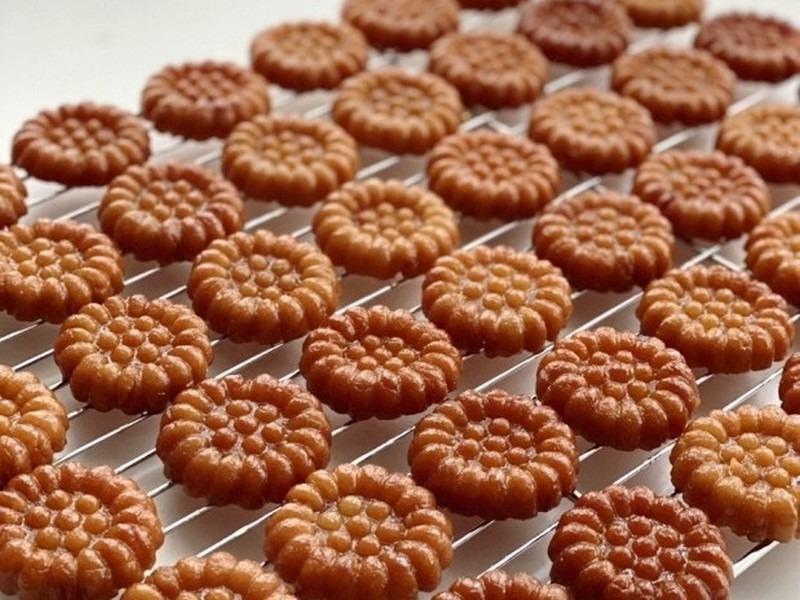
What does yakgwa taste like?
Though a dessert, yakgwa isn’t a strong and sweet taste. Compared to desserts of today that are way too overpowering with sugars, yakgwa is actually a bit difficult to call a dessert in my opinion. The first time I had it, I didn’t realize it was a dessert at all.
The taste is subtle and rather understated which is why my daughter loves it. Our family doesn’t tend to have major sweet teeth, though we do like chocolate, so yakgwa is a perfect combination of tastes that is a dessert but not too sweet.
Yakgwa is a sort of cookie that crumbles in your mouth and offers hints of ginger, honey, and sesame. Though they are deep-fried, they aren’t heavy, but light with a sticky amber syrup that is delightful to taste.
Why is yakgwa so popular these days?
Fast forward to the present day, and you’ll find a new generation embracing this timeless treat. It all started with the Newtro Trend in Korea. Newtro, a combination of “new” and “retro”, came about as more and more of the millennials in Korea were feeling nostalgic especially during Covid. They were harkening back to their time growing up in the 1980s and 1990s and soon millennials were looking deeper into their culture and traditions and embracing the things their grandparents love.

Now, yakgwa is no longer restricted to just special occasions but has become a popular choice for an after-school snack or a simple weekday dessert. More and more parents in Korea are ever aware of the unhealthy snacks and treats that are invading their space.
In fact, around schools in Seoul you can see signs that label the alleys as “Health zones” meaning that fast food restaurants and the like can’t operate there. You see more traditional snacks like yakgwa. Like I said, my daughter loves this and thankfully there’s a ddeok shop (rice cake shop) down the street with a grandma and grandpa that make a delicious version.
And it’s not just moms that are supporting this yakgwa popularity, but celebrities and major retail brands like CU, Paris Baguette, and Dunkin Donuts have joined the trend releasing their versions of yakgwa too. The major population of Korea is in the ages of 30 to 50 and they have been feeling nostalgic for simpler times, retro cartoons, and traditional snacks and this is where the resurgence of everything from yakgwa to crochet vests and dalgona has taken place.
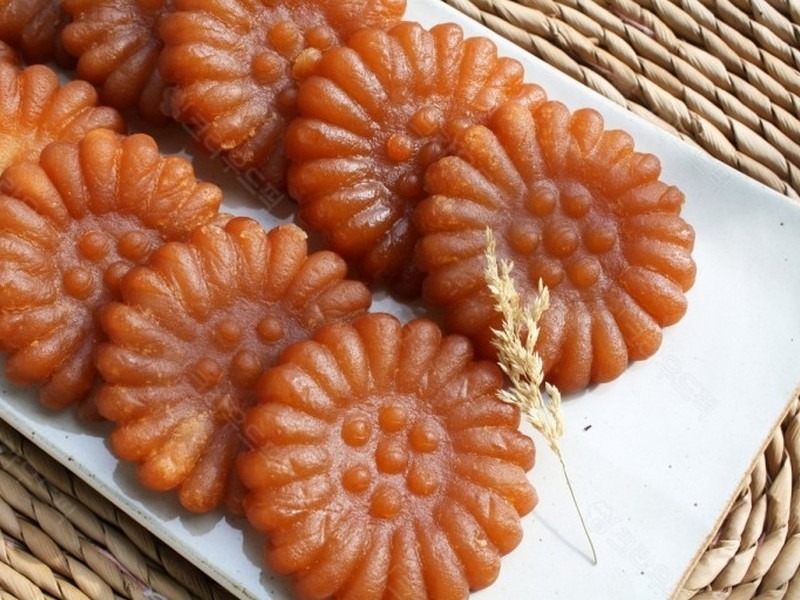
Kinds of yakgwa
There are two primary types of yakgwa in South Korea today. Here’s what you should know about them.
The first is the classic round variety with rippled edges, shaped like a delicate flower. Known as “gungjung-yakgwa” (궁중약과) it offers a soft and slightly chewy consistency. These can come in a variety of sizes from the tiniest and cutest flowers you’ve ever seen to palm size and these tend to be the most recognizable and are often what is featured at Chuseok because they look so lovely.
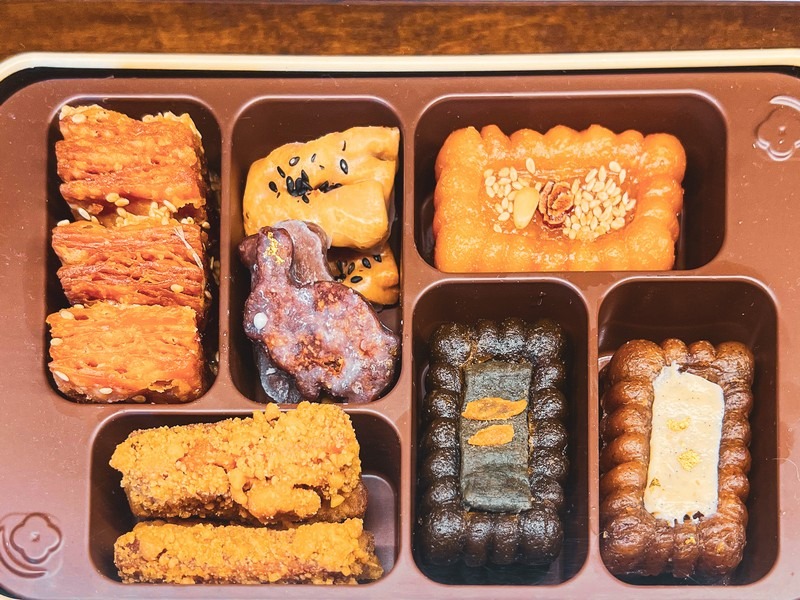
On the other hand, there’s the “Kaeseong yakgwa” (개성약과) which comes in a square or rectangular shape. This style is known for its brittle texture, breaking into layers like pastry dough. It’s less sweet and less sticky, offering a different experience altogether, more of a fall apart when you bite into experience. But that crunch is to die for and you can see all kinds of mukbangs on Youtube eating yakgwa and focusing on sharing that crunch.
Where to buy yakgwa online
Even if you’re not in Korea, you can find yakgwa online on major sites like Amazon. Just a tidbit, yakgwa is best enjoyed fresh, but, there are some wrapped up versions that are pretty tasty… you might just want to heat them up for 15-20 seconds first for the best experience.
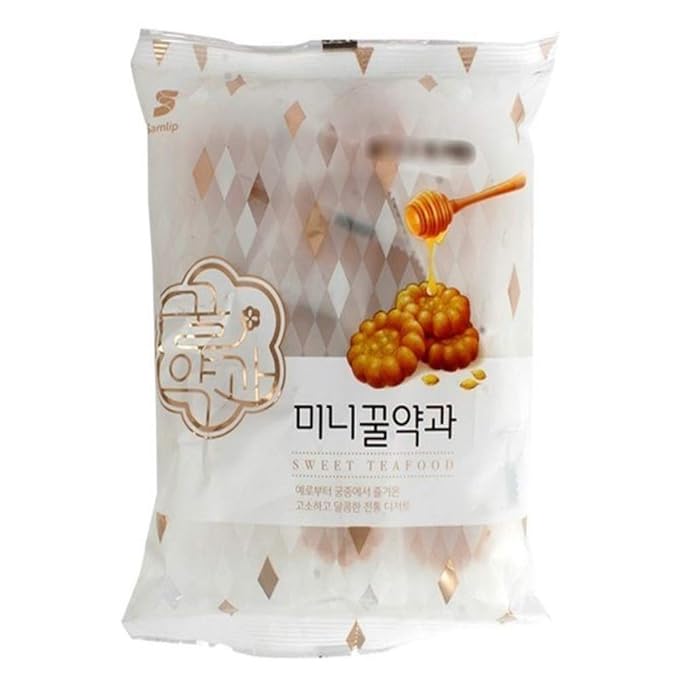
Not just online, you can find these tasty mini individually packaged yakgwa in Korea too and they make for great little snacks on the go, treats in a kid’s lunchbox, or addition to the tea table. They’re great whether you’re traveling, or just want to try them, share them, and keep them for a bit.
![[TTEOKANAJU] Yakgwa N Oranda Gift Set](https://thesoulofseoul.net/wp-content/uploads/2023/10/TTEOKANAJU-Yakgwa-N-Oranda-Gift-Set.jpg)
TTEOKANAJU Yakgwa and Oranda Set
If you want to try yakgwa and another treat you often find gracing the traditional tea house tables, check out this version I found available online. A bit more pricy, but could be great for a special occasion or holiday.
Where to buy yakgwa in Seoul
Yakgwa is readily available all over Seoul and South Korea. You can discover it in traditional Korean tea houses (전통찻집), along with other traditional desserts and teas. Supermarkets, snack stalls, and rice cake shops also sell yakgwa in various shapes and sizes, making it accessible to all.
Basically, when you’re walking down the street, if you’re on the lookout, you’ll likely spot it somewhere. If you really need some though, check out local traditional markets like Gwangjang Market though and you’ll be able to find a vendor with yakgwa.
Because of the recent popularity that has been a boom in the market, now the dessert ranges from budget-friendly to chic high-end. Here are a few upscale, fun, or new versions of the yakgwa dessert to find in Seoul.
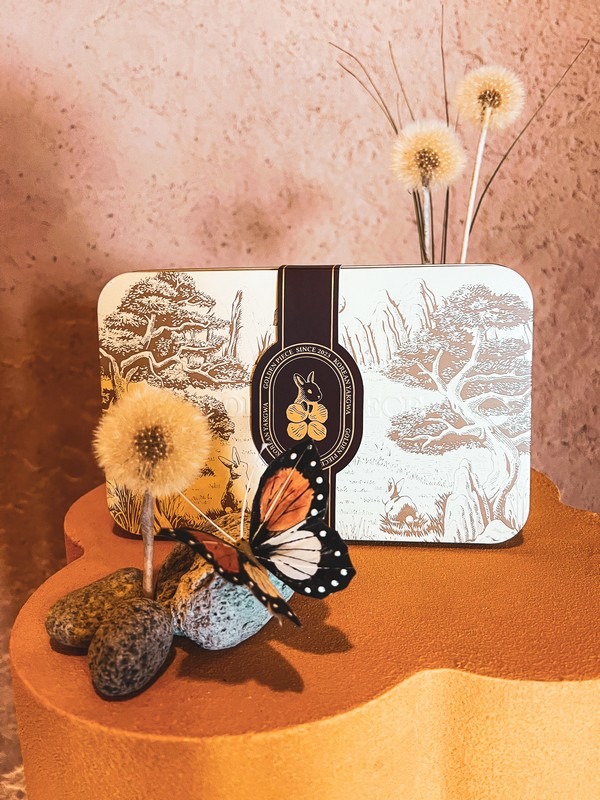
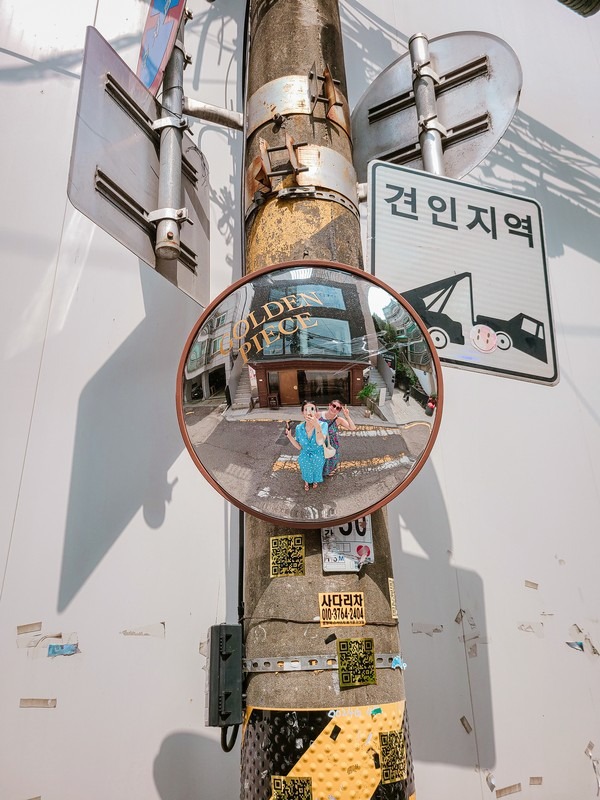
Golden Piece (골든피스)
Stop into Golden Piece in Hannam-dong, a chic and upscale specialty vendor of yakgwa. Having become extremely popular, you can only get some of their yakgwa, if you reserve in advance.
Golden Piece has a heftier price tag for their yakgwa sets (the Kaeseong yakgwa pictured above is from Golden Piece, FYI) but celebrities such as Taeyang, RM of BTS, Jimin, Kazuha from Le Sserafim, and others have been photographed eating these sumptuous treats.
Even if you haven’t reserved in advance, stop in and you can try some of their yakgwa and see what you think.
- Address: 25 Hannam-daero, 27-gil, Yongsan-gu, Seoul (서울시 용산구 한남대로 27길 25)
- Hours: Every day: 12:00pm ~ 6:00pm
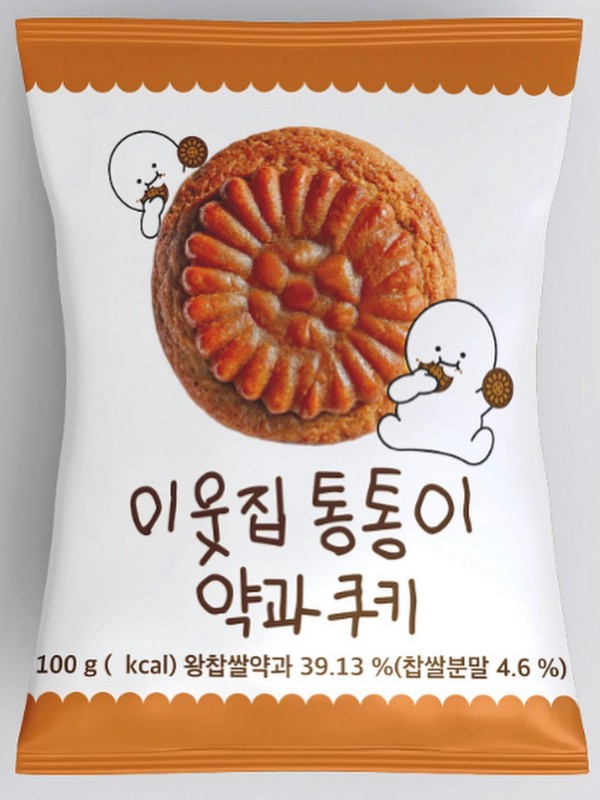
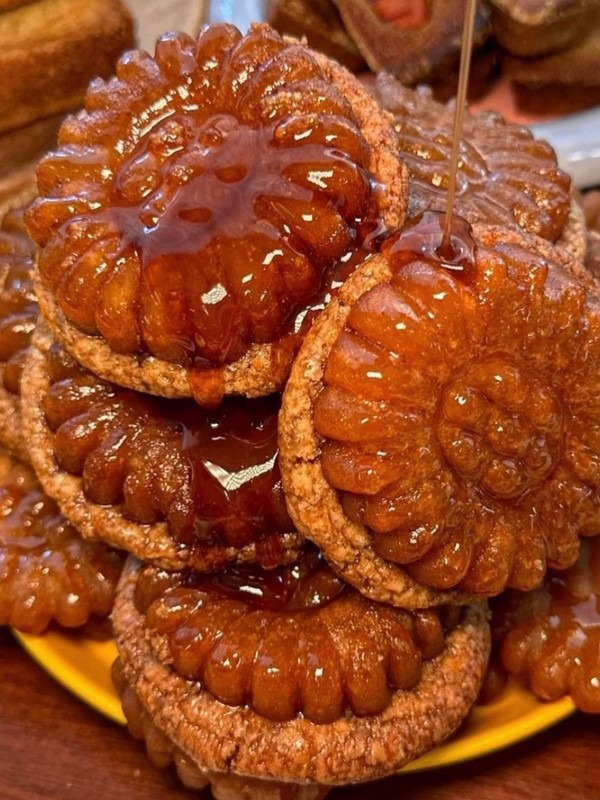
Tongtonge (이웃집 통통이)
A cafe that has modernized the traditional dessert into cookie form, Tongtonge is well-known for producing must-try bakery goods and they jumped into the yakgwa craze as well by creating the yakgwa cookie, a combination soft western-style cookie with a sticky yakgwa topping.
Their yakgwa cookie became so popular, they even released it in convenience store version so you can get it around every corner. But if you have a chance, visit their actual bakery for the best experience.
- Address: 19 Seolleung-ro 161-gil, Gangnam-gu, Seoul (서울 강남구 선릉로161길 19 1층)
- Hours: Every day: 10:00am ~ 9:30pm
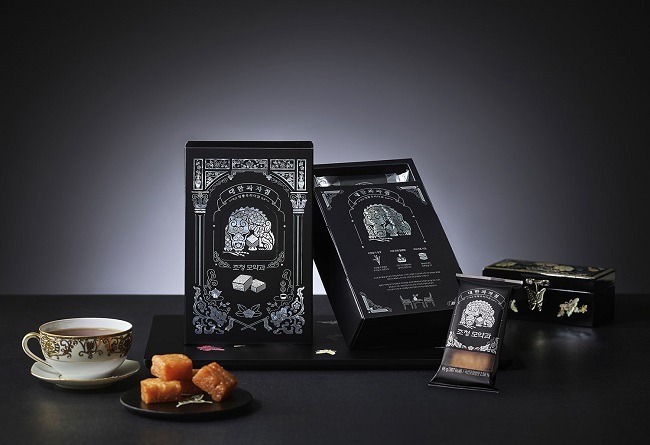
Paris Baguette
Though I haven’t yet tried the Paris Baguette version, the najeonchilgi-inspired packaging is gorgeous so I hope it tastes as good as it looks. Paris Baguette released a yakgwa tart which was so on trend they sold 100,000 of them in just the first two weeks after release. Check out your closest Paris Baguette, of which there are so so so many in Korea, to see if they have it in stock.
Embrace the sweet taste of Korean culture and tradition with this delightful confection that has stood the test of time and found a new place in the hearts of a younger grandmother-taste-loving generation.
Did you like this post? Pin iT!
